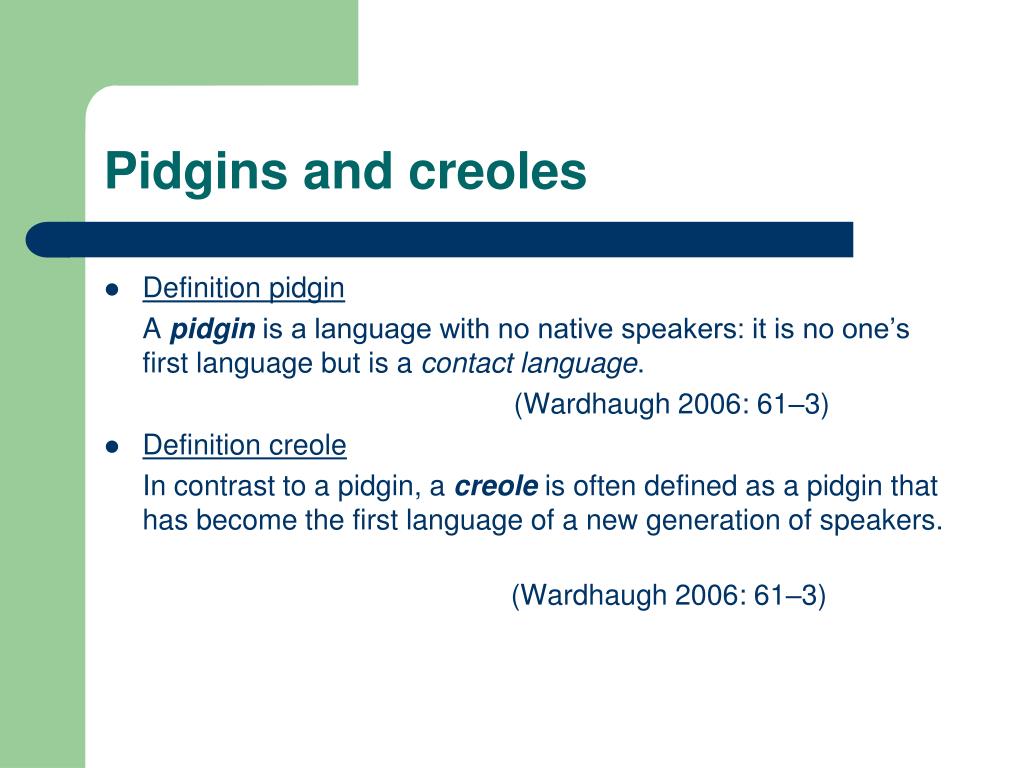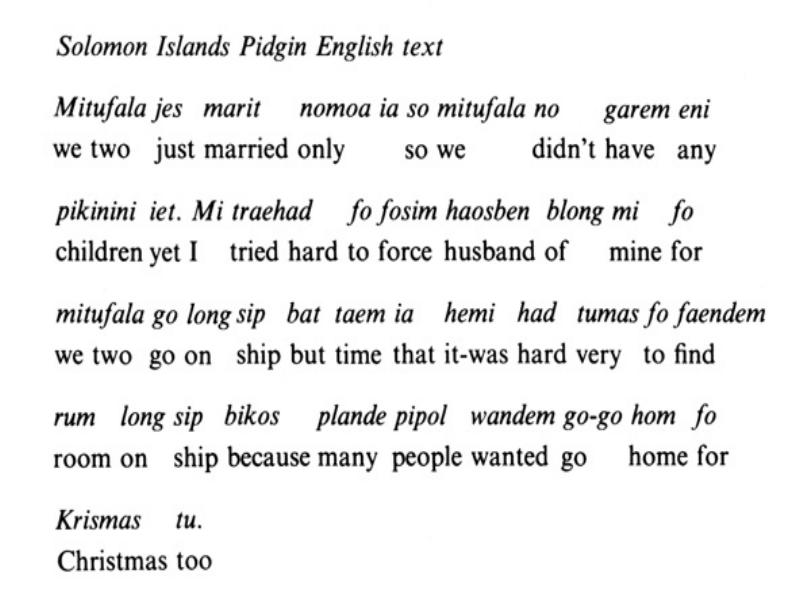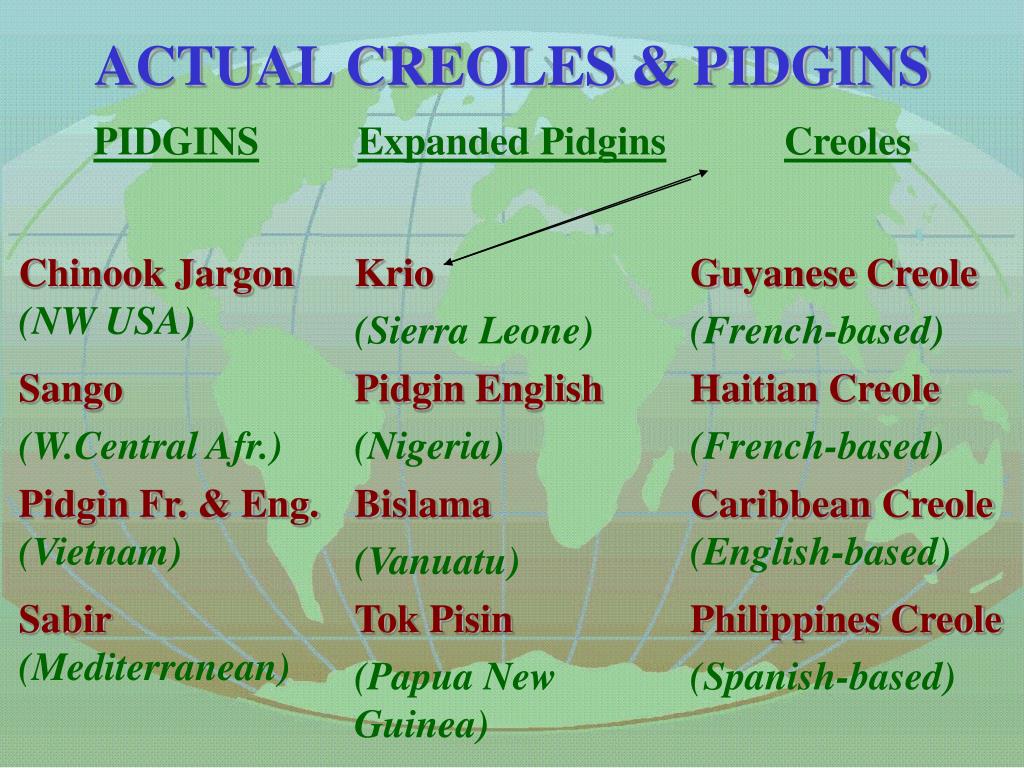

Some are transitory others have persisted for hundreds of years. Linguists and anthropologists who traditionally have focused on more formal languages are paying increased attention: studying contact languages with greater intensity and working with Indigenous groups, international agencies, independent nonprofits, academics, and others to preserve them.įrom pidgins-forms of simplified speech-used for commerce to the more mature creoles that have developed from them, contact languages exist all over the world. Only 200 or so remain-and scores are at risk of extinction.

Today, many of these contact languages are lost. But others were born of tragedy and violence-like Haitian Creole, Gullah Geechee, Jamaican Creole, and many others that arose during the Atlantic slave trade, when West African peoples combined several tongues with English, creating everyday languages often used among enslaved people. Some are peaceful, such as when groups meet for trade and need a lingua franca: Nigerian Pidgin English, for example, allows speakers of some 500 tongues to communicate. The origin stories of these linguistic mash-ups vary.

Linguists call such impromptu tongues “contact languages”-and they can extend well beyond the pidgin and creole varieties that many of us have heard of. When groups of people who speak different languages come together, they sometimes inadvertently create a new one, combining bits of each into something everyone can use to communicate easily.


 0 kommentar(er)
0 kommentar(er)
